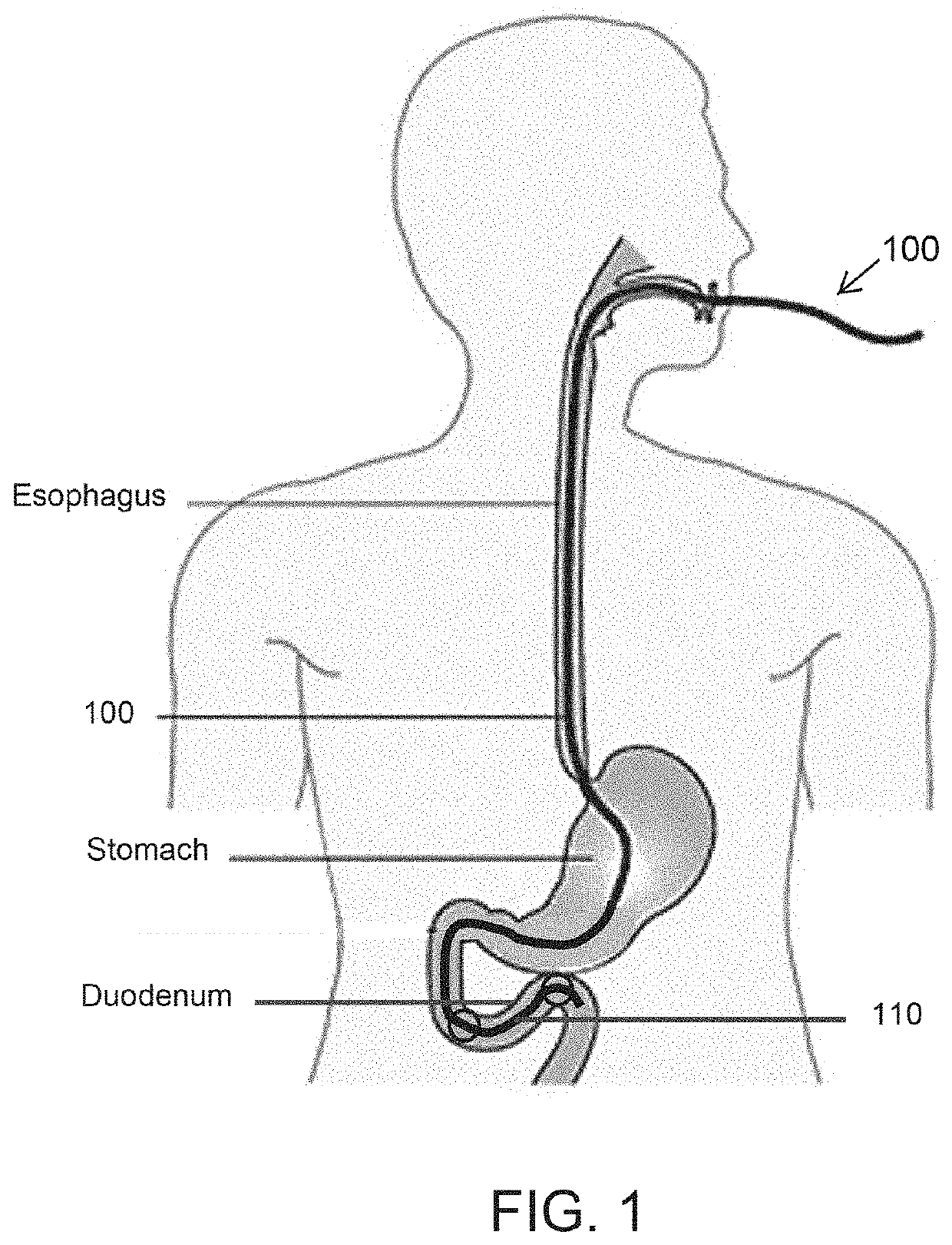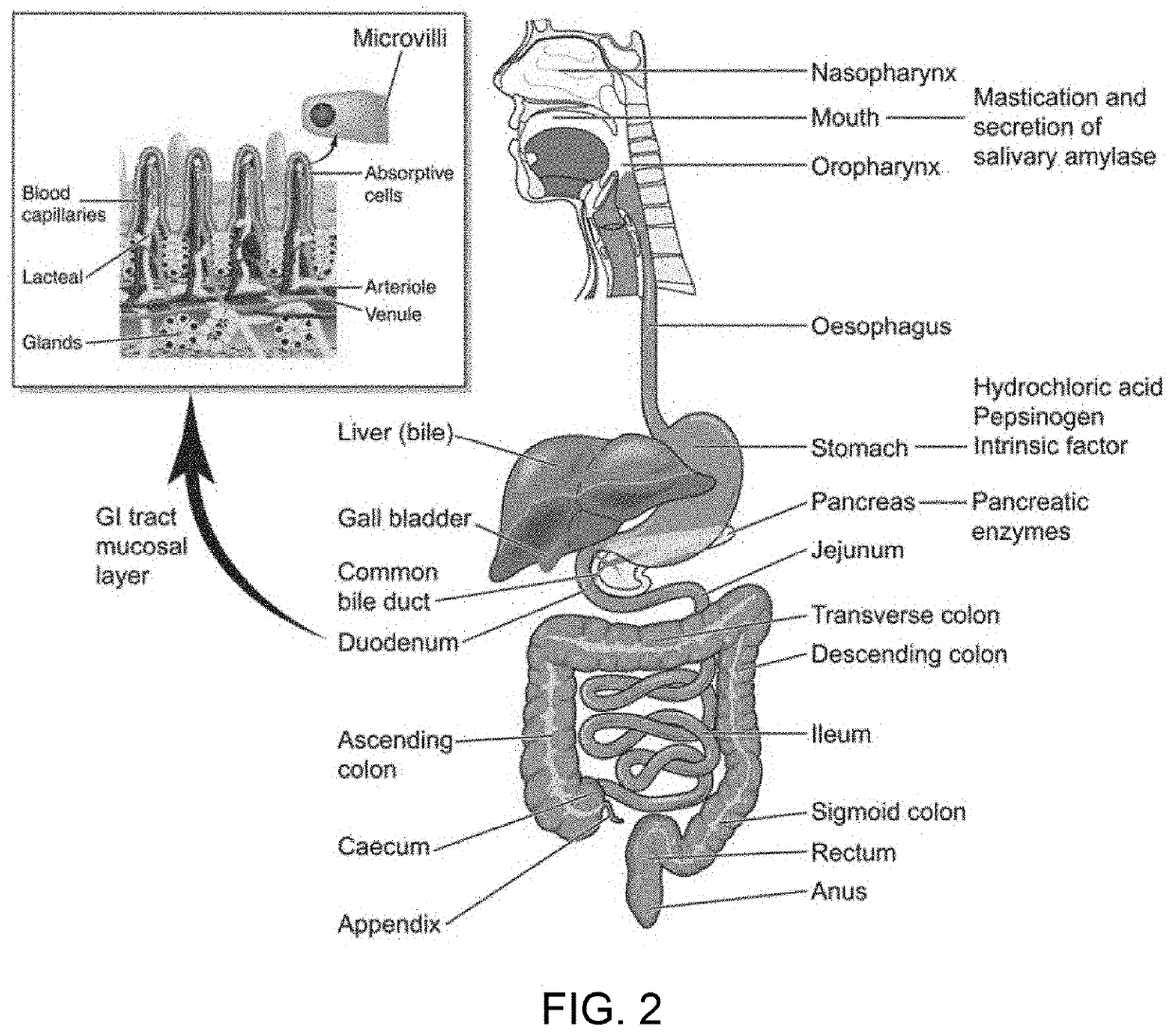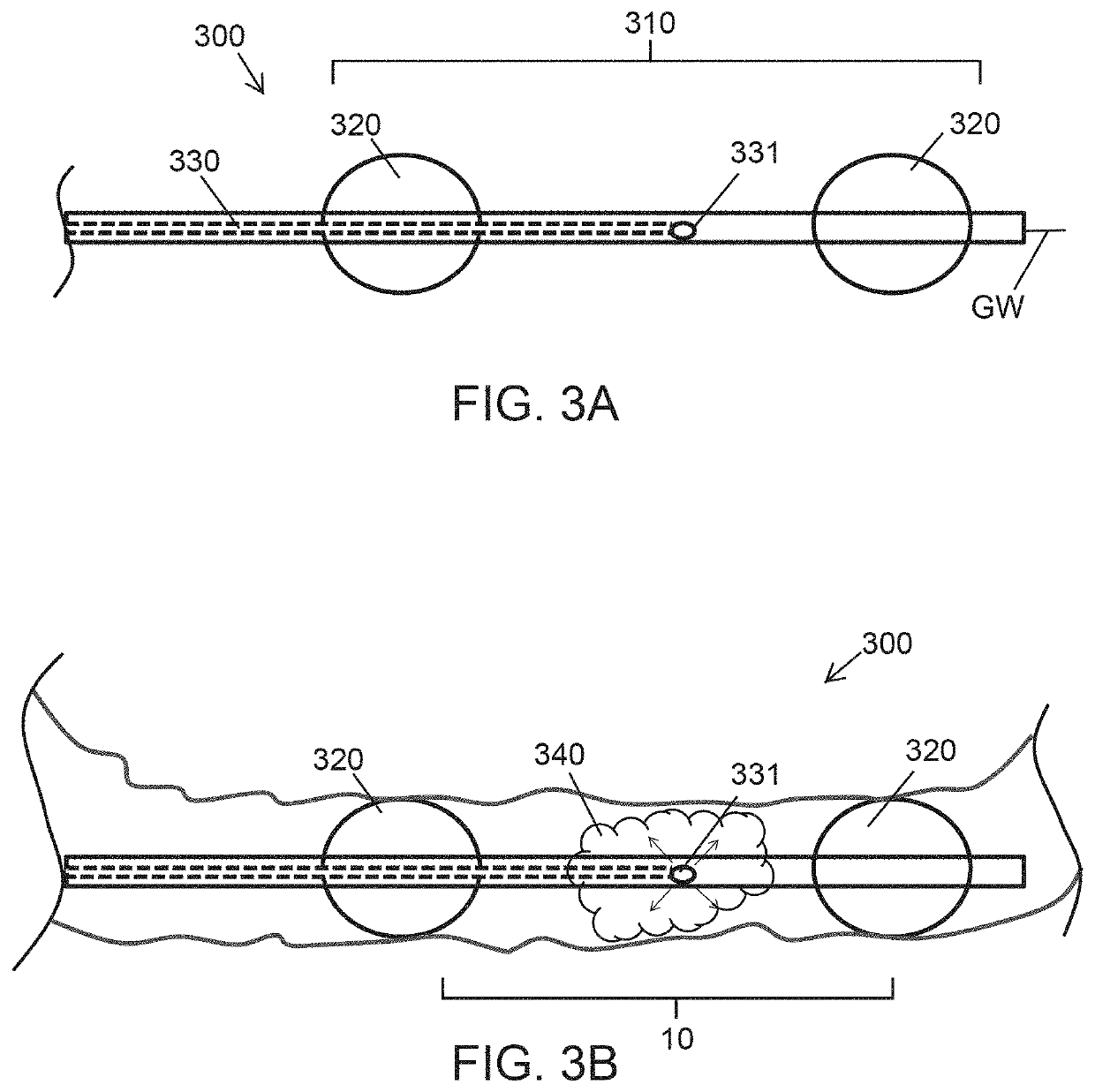Diabetes Treatment Methods and Devices
a treatment method and diabetes technology, applied in medical science, surgical instruments for cooling, balloon catheters, etc., can solve the problems of increased risk of diabetes, so as to facilitate the treatment of diabetes, facilitate sealing engagement, and facilitate the effect of treating diabetes
- Summary
- Abstract
- Description
- Claims
- Application Information
AI Technical Summary
Benefits of technology
Problems solved by technology
Method used
Image
Examples
Embodiment Construction
[0025]The invention pertains to non-invasive endoluminal devices that are advanced along the gastrointestinal tract via natural orifices. Typically, as shown in FIG. 1, the endoluminal device 100 is inserted into the patient orally and advanced through the patient's esophagus and stomach and into the duodenum to position a distal treatment region 110 within a desired treatment region 10 of the duodenum. The device delivers treatment to a superficial mucosal surface of a portion of the duodenum. In some embodiments, the device deliver therapeutic energy to so as to alter or ablate a superficial mucosal surface of the duodenum along a desired treatment region, typically a continuous surface within a region of the duodenum extending within the second or third portions of the duodenum, which are advantageously downstream of the Ampulla of Vater so as to avoid potential blockage of the openings of bile duct or pancreatic duct.
[0026]As can be seen in FIG. 2, the superficial mucosal surfac...
PUM
 Login to View More
Login to View More Abstract
Description
Claims
Application Information
 Login to View More
Login to View More - R&D Engineer
- R&D Manager
- IP Professional
- Industry Leading Data Capabilities
- Powerful AI technology
- Patent DNA Extraction
Browse by: Latest US Patents, China's latest patents, Technical Efficacy Thesaurus, Application Domain, Technology Topic, Popular Technical Reports.
© 2024 PatSnap. All rights reserved.Legal|Privacy policy|Modern Slavery Act Transparency Statement|Sitemap|About US| Contact US: help@patsnap.com










